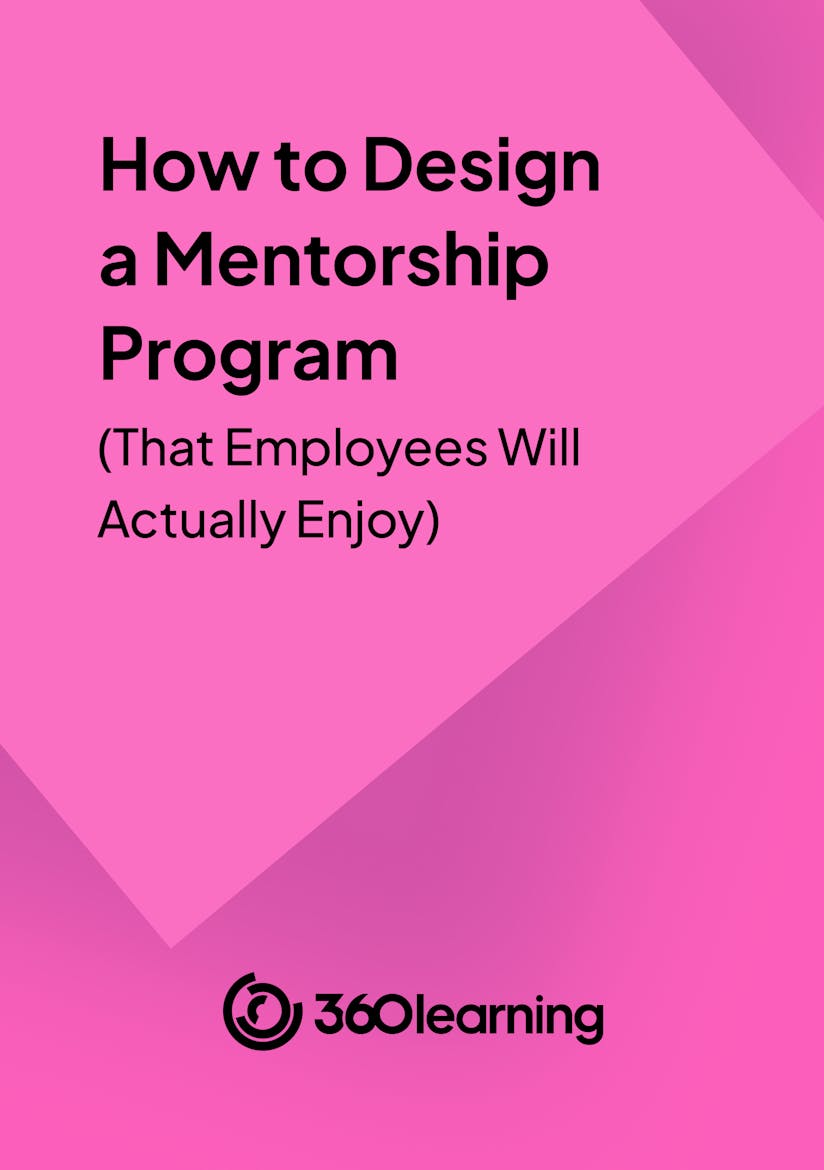
There’s a reason why doctors and fitness experts encourage regular stretching. Doing so improves your performance, increases your range of motion, and builds flexibility.
Likewise, employees can improve their performance and expand their skills when they stretch their abilities in the workplace.
This can be done by taking on stretch assignments: projects or tasks that are beyond their current skill set or expertise. Stretch assignments play a critical role in upskilling programs by strengthening employees’ career prospects, enhancing performance in the workplace, and extending an individual’s range of knowledge.
Here are several types of stretch assignments you can assign employees to help them upskill for career development and internal mobility:
- Teaching a class or developing a course
- Leading or working on a cross-functional project
- Coaching or mentoring a teammate
Sound interesting? Next we'll jump into more detail on each type of stretch assignment and what kinds of skills they help employees develop.

Scale your L&D program with peer mentoring.
By providing your contact info, you agree to receive communications from 360Learning. You can opt-out at any time. For details, refer to our Privacy Policy.
1. Ask subject-matter experts to teach peers
The protégé effect states that the best way for a person to learn is to teach. Therefore, empowering your internal subject matter experts to teach a class or create a course allows them to refresh existing knowledge and learn new skills in the process.
These employees learn how to better communicate their thoughts clearly and precisely, so colleagues who are taking the course can pick up the material quickly. This type of exercise also requires subject-matter experts to use their imagination and creativity to work out how to best deliver the content in an engaging and effective manner.
Take for example, a senior graphic designer who is creating a beginner Photoshop course for her organization. Even though she knows how to navigate the software like the back of her hand, she will still need to learn how to explain design concepts in a manner that non-designers can easily and quickly pick up.
To encourage more frequent peer training in your organization, consider investing in an LMS with an authoring tool that enables anyone to create internal courses in minutes. The most flexible employee training programs enable users to create and participate in both employer and employee-led learning remotely and asynchronously.
Google, for example, has a formal employee-to-employee training system called “G2G” (Googler-to-Googler), in which employees volunteer to teach and train their peers. They can create a course on any topic that they’re interested and experienced in, which has covered topics as diverse as coding, cooking, and ballroom dancing.
This initiative has also created tangible benefits for volunteer teachers, such as improved performance and new hard and soft skills. A Google engineer even taught his co-workers how to fly airplanes, and in the process, he largely improved his skill and confidence in public speaking and presentation.
2. Assign employees to work on cross-functional projects
Although online learning and remote work give employees greater autonomy on how they learn and work, they can also be isolating. One way to offset this is to have your employees upskill and challenge themselves by participating in or leading cross-functional projects within your organization. For example, you could have an employee in product management work with the marketing and customer success teams on a new product launch.
When employees collaborate with other teams or departments, they can share their expertise and learn from fellow colleagues, while expanding their own knowledge and skills. This could mean gaining tactical skills and discovering helpful new tools, but also developing communication and interpersonal skills, emotional intelligence, and teamwork. This transfer of knowledge and expertise also allows team members to exchange ideas and share different perspectives, which can help stimulate creative thinking and problem-solving.
3. Have experienced employees coach junior team members
Becoming an effective leader isn’t as easy as just reading a book or taking a course. It requires hands-on experience acquired through interpersonal interactions in the workplace. Help your employees gain this experience with an internal program teaching them how to coach their peers.
In the workplace, a coach is a person involved in the instruction, direction, or training of an individual or team to help them grow and develop their skills. A leadership coaching survey showed that 72% of companies offer some type of leadership coaching to improve the leadership skills of their employees. This type of stretch assignment is well-suited for employees who want to guide others in reaching specific goals, and to develop leadership skills like emotional intelligence, empathy, and self-awareness.
There are two ways to support your employees with a coaching program:
- One-on-one coaching: This occurs when a more knowledgeable or skilled employee works with a more junior team member in the same field to guide them on their professional development. This method allows the coach to follow their trainee’s work and habits to determine how they can help improve their performance. For example, in a design agency, a lead designer can coach a junior designer and help them plan and strategize their work.
- Peer-to-peer coaching: This is a more informal method where two or more employees with similar levels of experience and seniority work together to help each reach their goals. It can be as simple as connecting to ask questions, review work, provide feedback, or help someone join a new project or team. For example, assigning onboarding buddies to new hires helps the latter acclimate to the company and their role–and gives the former an opportunity to take on more responsibility and engage with their work in a new way.
4. Increase workplace engagement with a mentoring culture
Research from Gallup found that a whopping 60% of workers are emotionally detached at work. Giving your employees rewarding opportunities to become mentors can increase their engagement and satisfaction in the workplace. A study from the Harvard Business Review revealed that employees who served as mentors “described their job as more meaningful than those who did not mentor.” And mentors also experienced lower levels of anxiety than their non-mentoring counterparts.
Like coaching, mentoring is a relationship in which employees learn from someone else’s experience. Coaching is more performance-driven and often designed to help trainees reach milestones and achieve specific goals. On the other hand, mentoring is more focused on passing a mentor’s knowledge onto the mentee, rather than following direct instructions.
For example, desired outcomes of a mentor-mentee relationship are often: helping an individual realize their potential, accelerating their development, or supporting them in furthering their career. A mentor looks at their mentee’s holistic improvement, rather than specific skills that can be learned through practice.
Mentorship also enables mentors to transform their individual knowledge into institutional knowledge. And this process of sharing their skills and ideas with others helps them improve their interpersonal and communication skills.
To make your mentorship program a greater success, pair mentors with mentees who have different experiences, knowledge, and skill sets. This encourages mentors to get outside their comfort zone and challenges them to think or see things differently. As part of its four-step mentorship program, Disney Media & Entertainment Distribution matches mentees with mentors who work in different locations. This approach creates more opportunities for interesting conversations and fresh perspectives because employees can interact with team members they wouldn’t normally encounter in their day-to-day work.
"Stretch" your employees to strengthen your organization
It’s easier for employees to excel at stretch assignments in a collaborative learning environment. A collaborative learning culture ensures that your employees are regularly sharing knowledge and building new skills, whether through peer-learning opportunities or mentorship and coaching programs.
Investing in a comprehensive learning platform like 360Learning allows employees to declare their learning needs in real-time–enabling L&D teams and SMEs to create courses that address the most immediate skills gaps within your organization.
Want to read about more upskilling strategies to develop a highly skilled, engaged, and loyal workforce that’s ready to take on new challenges and propel your business to greater heights? Explore more articles on the topic below, or book a personalized demo of 360Learning here.




